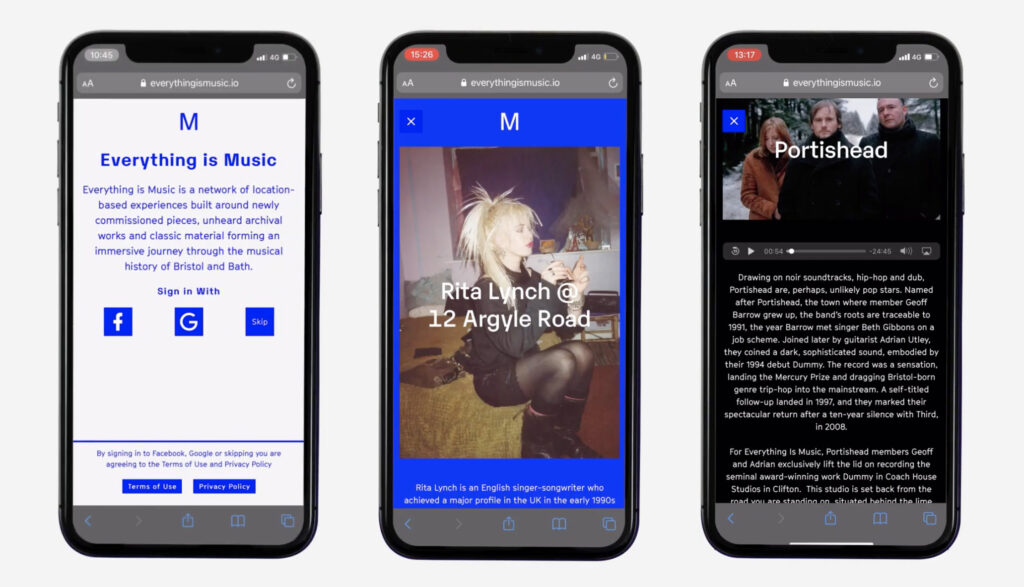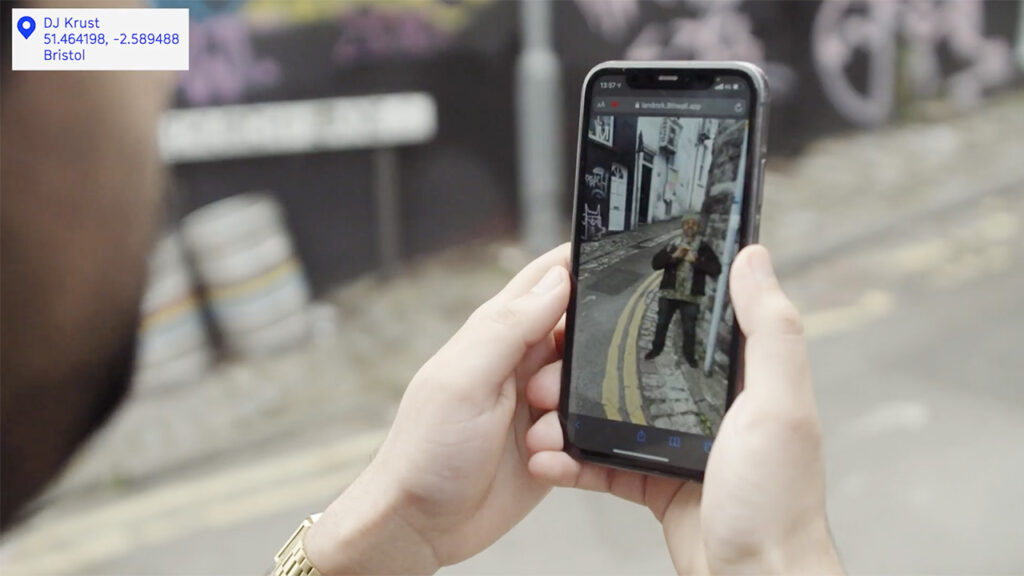In between the reggae-hip hop concoctions of the Wild Bunch and the trip-hop stylings of Portishead, the Caribbean strains of the Rainbow Steel Orchestra and the new wave of Tears For Fears, the neighboring Bristol and Bath in England have musical histories to spare. And since May 2021, their storied heritage could be found on Everything Is Music, a digital museum that captures the cities’ musical pasts in unique location-based stories.
To participate, users simply navigate to everythingismusic.io on their mobile devices to launch a dynamic map geo-tagged with 250 pins. By physically visiting these locations, they can access related content ranging from podcasts to photographs to audio commentaries. There’s a holographic tour hosted by DJ Krust of his Bristol haunts, an immersive audio tour of key dubstep locales by DJ Pinch, and 3D scans of sound systems, presented in augmented reality (AR), that can be unlocked at St Paul’s in Bristol.

Everything Is Music presents users with a geo-tagged map with 250 locations that can be physically unlocked to access multimedia stories. Images: Everything Is Music
Created by Bristol-based publication Crack Magazine in partnership with content delivery specialist Landmrk, and supported by Bristol+Bath Creative R+D, Everything Is Music has lately been shortlisted in the Arts Council England’s first Digital Culture Awards and at Europeana’s Heritage In Motion 2021 competition — nods to the project’s fresh, ground-level approach to cultural heritage. As Project Lead Ben Price tells Jing Culture & Commerce, “It’s a new way of having cultural heritage, being able to see it in a city.”
In fact, a chief focus of the platform, adds Price, was to get participants to more deeply explore “parts of the city they wouldn’t normally go to.” To do so, the team at Crack plumbed the depths of Bristol and Bath’s musical history, gathering archival material from the cities, while reaching out to historic venues, businesses, and individuals for firsthand accounts. They also considered how all that content could be best delivered, deciding that “one thing we should really do is mix up how people will be consuming the stories,” according to Price.

The platform leverages creative technologies including 2D holograms, (above), audio-reactive visualizers, and augmented reality. Image: Everything Is Music
It’s why Everything Is Music offers such an array of mediums from videos to holographic AR — clearly, no one wants to be reading on their phone while walking around a city. Instead, by using creative technologies to enhance how users view and experience an environment, “[they] become slightly more aware of how important the surroundings are to the context of the story,” says Price, “and also enables them to use their phones in ways that they probably wouldn’t normally do.”
Released at the tail-end of lockdowns (and ahead of an Omicron surge), the project was fortuitous enough to catch audiences eager for digitally enhanced onsite interactions, with some 10,000 visitors accessing the platform since its start. Which is heartening for a project with a small advertising budget. Rather, because of its earlier community outreach, Everything Is Music was helped by word-of-mouth. In turn, Price adds, “On the platform, we made sure to encourage people to spend money locally at independent shops, like, this is a pub that used to be a massive gig venue — go have a drink there now and support your local community.”
Eight months on from its launch, the Everything Is Music team is currently “heavy into R&D,” says Price, crunching audience input (users can submit their own stories or feedback on the platform) and exploring ways to expand the project’s scope. New features and monetization could be in its future, as could an extension into other cities — all part of its intended development into a constantly updated resource where users can discover what happened in a city before and what’s happening now.
What better way of presenting cultural heritage, after all, than to make it present. “What Everything Is Music does is it opens up access to everyone being able to experience cultural heritage,” says Price. “You don’t have to go halfway across the city or get in a car to pay £15 to get into a castle; it’s right on your doorstep.”



